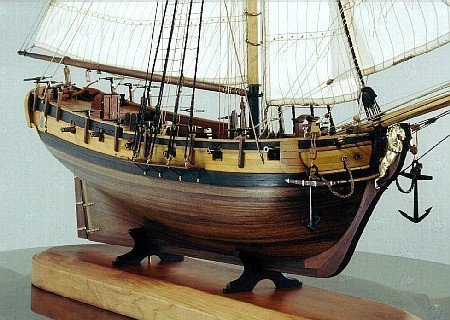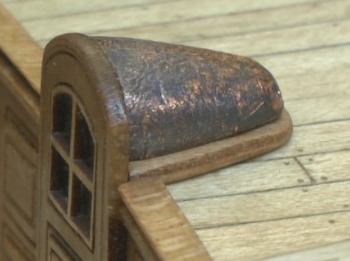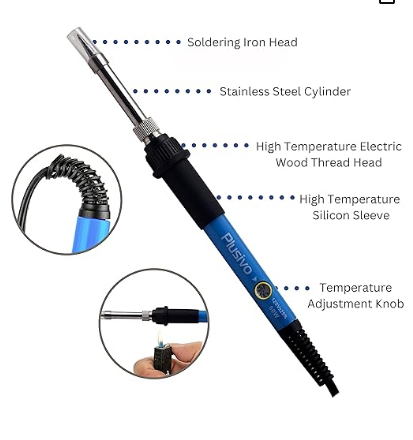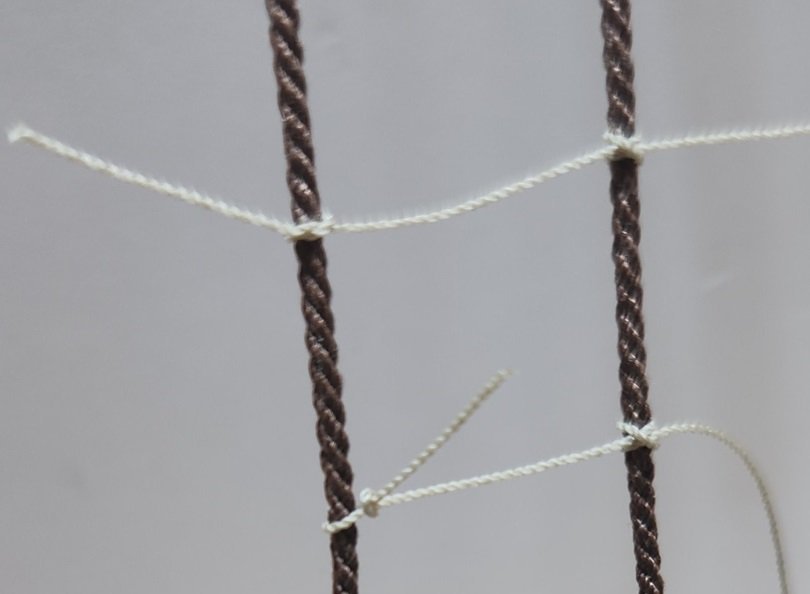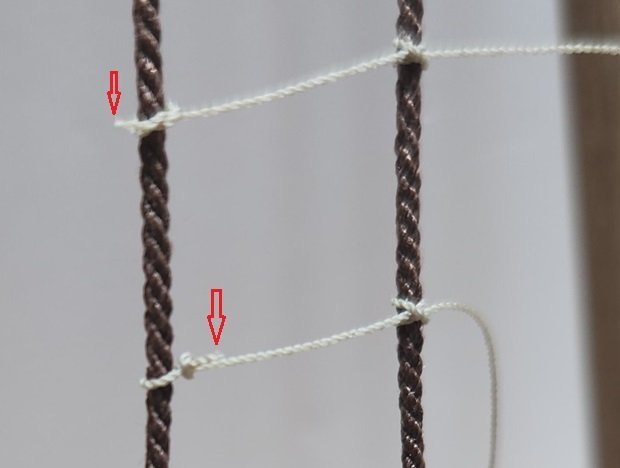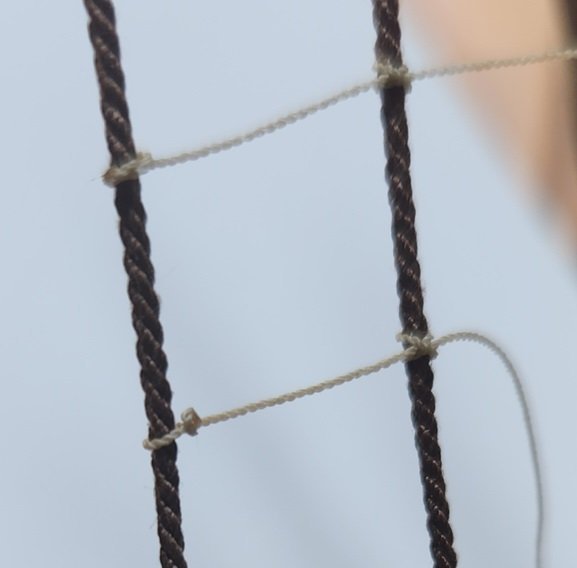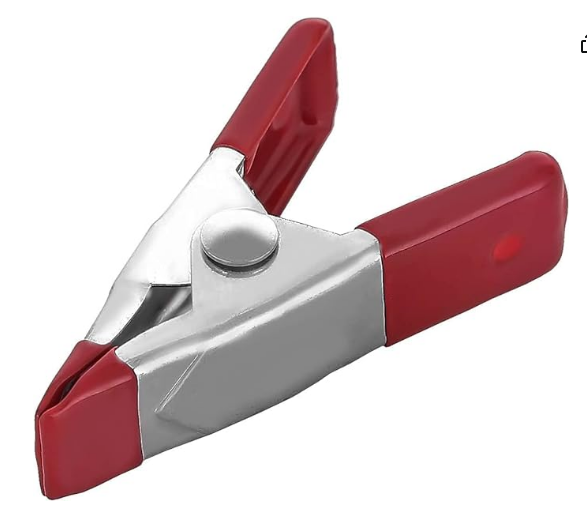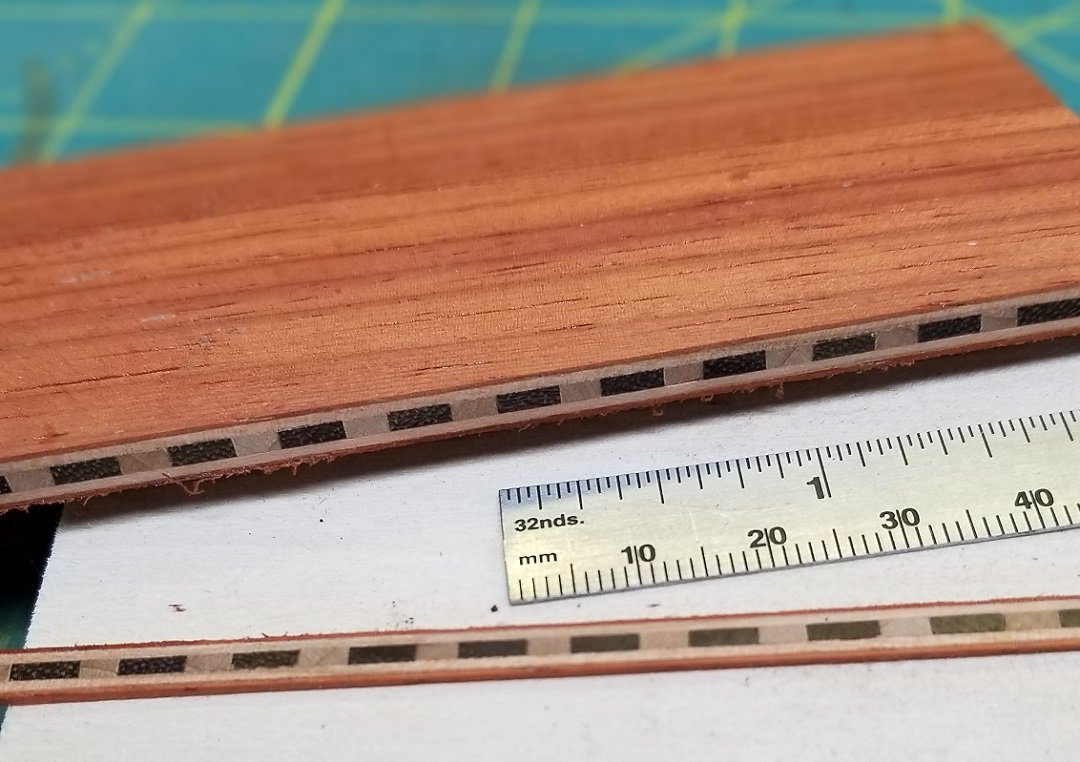-
Posts
3,168 -
Joined
-
Last visited
Content Type
Profiles
Forums
Gallery
Events
Everything posted by Gregory
-
Take a match to it ( not too close ). If it's poly it will melt, if it's natural fiber it will burn.
-
If you look at my Resolution build you will see that the Corel kit is based on the lines of Ferret. Corel forgoes the gammoning and rigs the bowsprit much like what is found on the later cutters. I have yet to see any ship similar to this. The Corel kit has many features that deviate from actual practice, so there is no good reason to assume their treatment of the bowsprit is based on good evidence. While the contemporary lines of Ferret says the ship is a cutter rigged sloop, I believe this relates more to the mast placement and sail arrangement and doesn’t account for a moveable bowsprit like found on cutters. PS FWIW The gammoning you see in the Chapelle drawing is based on educated conjecture and not the drawings he references.
-
Laser cannon bracket
Gregory replied to mediocremodeler's topic in CAD and 3D Modelling/Drafting Plans with Software
As I said above, just the process of making a cable out of several ropes would have resulted in the opposite twist. I answered my own question in that regard. I suppose the choice of one over the other, would be size.. -
Laser cannon bracket
Gregory replied to mediocremodeler's topic in CAD and 3D Modelling/Drafting Plans with Software
With some thought, because a cable would have been laid up from ropes, it would have had the opposite twist of the ropes. -
Laser cannon bracket
Gregory replied to mediocremodeler's topic in CAD and 3D Modelling/Drafting Plans with Software
Any idea how the lay of the rope affects the use/handling of the rope? -
Laser cannon bracket
Gregory replied to mediocremodeler's topic in CAD and 3D Modelling/Drafting Plans with Software
Since you have a laser, have you considered making pieces like these: ... and laying battens in the slots? Your laser cut gratings do look good as they are. Nice square holes. Some lasers don't do that very well at these small sizes. -
Autodesk Fusion 360 is free for hobbyists, non-commercial use. It's a little hard to find where they say it is free, but it is still there.
-
Have you tried Fusion 360 free version for your curve problem?
-
Warship identified off Florida coast 3 centuries after it sank
Gregory replied to Gregory's topic in Nautical/Naval History
From what I can Google, 9 pounder cannon ( which may have been what they were alluding to ) was upwards of 2,200 LBS.. -
Heater for sealing the end of rigging rope.
Gregory replied to DaveBaxt's topic in Modeling tools and Workshop Equipment
@wefalck Great idea but challenging at our level. Think “curling iron “ with a .5mm tip. Polyester melts at about 250c. Perhaps some shaped tweezer-like tools with insulated handles that you keep in a small heated cauldron, then you use the tools and return to the heat source as needed. -
Heater for sealing the end of rigging rope.
Gregory replied to DaveBaxt's topic in Modeling tools and Workshop Equipment
Sorry Dave, I got sidetracked and forgot about getting you some info on what I use. I use this soldering iron from Amazon. ..and a tip like this. It has a little dial for adjusting the temp fromm 200 to 450 C.. I use about 350 on the polyester thread/rope. A little lower might work. I would set it as low as you can and still have it melt. Too hot and it really discolors the rope. Here are a couple of different knots I made on my ratline practice jig. The excess snipped off with a little nib left behind. that bottom knot is not as small as I would like, but I was just putting together a quick demo. Here is after I melted the nib with my iron. There can be some dark discoloration, but you can minimize that by setting the iron as low as you can while still getting melt. Also, cut the nib as close as you can while leaving something to melt. If the nib is too big you end up with a blob that detracts from the knot. Needless to say, you have to be really careful not to melt any other rigging. Don't ask how I know this.. This method is good for almost any place where you want to minimize a loose end sticking out if you haven't managed to hide it in some other way. -
That was always my method till I acquired that little heat gun, and it doesn't leave any soot..😁
-
I'm guessing you are talking about these little clamps that are about 2 inches x 1/2 inch. If something else, let me know. I would go with this 1/2" shrink tubing.. I don't think a hair dryer will cut it. I have one of these little Mini Heat Guns, only $13, and it will melt plastic. I have found it useful and convenient for a lot of little jobs. Let me know if you have something else in mind.
-
Heater for sealing the end of rigging rope.
Gregory replied to DaveBaxt's topic in Modeling tools and Workshop Equipment
Dave, I have used a small soldering iron with a needle-like tip to get rid of the little nib on knots. This is with polyester rope. Doesn’t work for cotton for the reason Allan mentioned. The soldering iron has a temp control. I set it for about 300F. I can dig up some pics if you are interested. -
Put shrink wrap tubing on the ends of those clamps. Wont come off.
-
Just so everyone remembers what Mike is looking for:
-
I've done some stuff close to .5mm on my Proxxon, so I would be surprised if the Byrnes wouldn't do close to that. Of course the blade would be the important factor. That slice is about 1mm before I did any sanding. This is a wood sandwich I made to do some inlay work. Mahogany, ebony and boxwood. A nice even coat of yellow PVA and plenty of clamping. Never had any separation when sawing.
- 422 replies
-
- Vanguard Models
- Sphinx
-
(and 1 more)
Tagged with:
-
Do you have small table saw? You could glue square stock together then slice of strips as thin as your saw will allow..
- 422 replies
-
- Vanguard Models
- Sphinx
-
(and 1 more)
Tagged with:
About us
Modelshipworld - Advancing Ship Modeling through Research
SSL Secured
Your security is important for us so this Website is SSL-Secured
NRG Mailing Address
Nautical Research Guild
237 South Lincoln Street
Westmont IL, 60559-1917
Model Ship World ® and the MSW logo are Registered Trademarks, and belong to the Nautical Research Guild (United States Patent and Trademark Office: No. 6,929,264 & No. 6,929,274, registered Dec. 20, 2022)
Helpful Links
About the NRG
If you enjoy building ship models that are historically accurate as well as beautiful, then The Nautical Research Guild (NRG) is just right for you.
The Guild is a non-profit educational organization whose mission is to “Advance Ship Modeling Through Research”. We provide support to our members in their efforts to raise the quality of their model ships.
The Nautical Research Guild has published our world-renowned quarterly magazine, The Nautical Research Journal, since 1955. The pages of the Journal are full of articles by accomplished ship modelers who show you how they create those exquisite details on their models, and by maritime historians who show you the correct details to build. The Journal is available in both print and digital editions. Go to the NRG web site (www.thenrg.org) to download a complimentary digital copy of the Journal. The NRG also publishes plan sets, books and compilations of back issues of the Journal and the former Ships in Scale and Model Ship Builder magazines.

